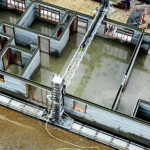How Can You Make Your Home Earthquake Proof
Earthquakes are one of the most devastating forces on Earth. The seismic waves that travel through the ground can damage buildings, kill people, and cause enormous financial losses. Hence, making the interior of your home as earthquake-resistant as possible should be the first step for anyone living in an area prone to earthquakes.


Fig 1: Building collapsed due to earthquake
Courtesy: Eastern Kentucky University
Since an earthquake can hit at any time, there is no time to get ready, unlike other natural disasters. Besides, the International Building Code includes standards from the National Earthquake Hazards Reduction Program in 2000, ensuring that newer homes are far more earthquake-resistant than older ones. However, even if your home was built after 2000 and is earthquake resistant, this does not imply that you are safe from earthquake damage. On the other hand, the odds are far better that your house will be spared.
Ways to make Earthquake Resistant Homes
If you are having your house built on your own or even with consultation from some experts, here are some tips for making sure it’s earthquake resistant.
- Inspect your Foundation
The local soil and water primarily influence each home’s foundation. Before beginning construction, it is necessary to inspect the soil condition. The moisture level of the foundation must be stable. Ensure that the drainage system on the roof is adequate so that there are no clogs that can damage the floors beneath the roof and that the rainwater on the ground flows into drains and does not pool under the building.
- Opt for Base Isolation
You can also opt for base isolation which is a technique that lifts the building’s foundation above the ground in order to resist ground forces. During earthquakes, these shock absorbers are composed of steel and a form of synthetic rubber that acts as a spring. These absorb the motion back and forth. The isolators vibrate as the base moves during an earthquake, while the structure stays stable. This efficiently prevents seismic vibrations from penetrating the building by absorbing them.
- Check Soil Conditions
It’s best to hold off on building a house on your plot until it’s been tested to see if the soil can support the weight. It is crucial to know how much weight it can bear. In these scenarios, soil testing can be done by private and even semi-governmental agencies. These organizations can tell you how much weight the earth can support and whether or not construction is even feasible.
- Reinforce your Building
To prevent collapse, earthquake resistant structures must redistribute the seismic forces that go through them. A building’s reinforcement is predicated on shear walls, cross braces, diaphragms, and moment-resistant frames. A shear core comprises shear walls surrounding an elevator shaft or stairwell in the center of a building. In contrast, cross-bracing involves reinforcing the walls with diagonal steel beams.
- Opt for Safety in Walls
During the planning phase, infill walls should be constructed from stone. Steel frames reduce the building’s structural issues. Unreinforced Masonry structures consist of bricks, hollow clay tiles, and other materials that are susceptible to seismic damage. Unreinforced Mansory buildings are characterized by load-bearing walls and non-load-bearing walls constructed from cinderblocks, bricks, hollow clay tiles, or other masonry materials. In the event of a quake, these structures are weak and can quickly collapse, crushing the residents. Thus, there should be sufficient space between walls and the building’s framework. It mitigates the drift since the structure shifts during an earthquake.
- Consult an Expert
You may have obtained some information about the property’s seismic susceptibility from the seller’s disclosure documents and the home inspection report when you bought your home. In places prone to earthquakes, a competent house inspector will identify traces of seismic damage and indicate if a property should be retrofitted to meet current earthquake safety requirements. If the home assessment revealed any indications of seismic risk, contact a structural engineer for further examination. The engineer will evaluate and recommend cost-effective solutions to bring the home up to date for $300 to $400. It may be a lengthy procedure, but safety must always come first.
- Bring in Innovation
Engineers and scientists are creating new building materials with enhanced shape retention. Shape memory is one such idea that backs this retention. Also, for increased strength and ductility, fiber-reinforced plastic can be wrapped around columns.
Engineers are also using natural components to strengthen their structures. Mussels’ fibers, which are both sticky and rigid, and spider silk’s high strength-to-size ratio show promise as building materials. In addition to being lightweight, interlocking structures with unlimited forms, bamboo and 3D printed materials can potentially provide even better resilience for buildings.
- Brace the Cripple Walls
Cripple walls are the short walls erected on top of the foundation that extends to the first floor to support the structure and provide the crawl space, and they are the walls most vulnerable to earthquake shear stresses. These act as shock absorbers and minimize the likelihood of a building collapsing during an earthquake. Cripple walls are reinforced with double studs, attached to the foundation, secured to the floor joists or rim joists with specific connections, and covered with sheathing plywood with air vent holes during an earthquake retrofit. This transforms them into shear walls that can withstand earthquake-induced sideways movement.
- Check Your Roof
Consider replacing your roof with a light, earthquake-resistant material like aluminum, wood, or asphalt rather than heavy brick or terra-cotta when the time comes. The less force your roof exerts on your home’s support system, the less likely it will collapse.
- Inspect your Surroundings
Maintaining and eliminating the dangers of such items is essential so that they do not pose a threat to your home during an earthquake. Remove dead trees and secure or remove rickety old barns and damaged fences to reduce the risk of falling objects during an earthquake. If your deck is very tall, diagonal bracing running from the top of one post to the bottom of the next should be used to hold the posts. Regular checking for dangerous materials like old or leaning trees, electrical wires, or power lines is required.
Conclusion
Apart from these, several factors impact an earthquake, so efforts must be made to understand and improve the building structures to ensure safety in the long run.
References
- Vancouver, City of. “Prepare Your Home for an Earthquake | City of Vancouver.” Prepare Your Home for an Earthquake | City of Vancouver, vancouver.ca, https://vancouver.ca/home-property-development/prepare-your-home-for-an-earthquake.aspx. Accessed 13 May 2022.
- Inc., BigRentz. “How Earthquake-Proof Buildings Are Designed | BigRentz.” How Earthquake-Proof Buildings Are Designed | BigRentz, www.bigrentz.com, 4 May 2022, https://www.bigrentz.com/blog/earthquake-proof-buildings.
- “Tips for Making Your Home Earthquake Resistant.” Tips for Making Your Home Earthquake Resistant, www.proptiger.com, 28 Apr. 2015, https://www.proptiger.com/guide/post/tips-to-make-your-house-earthquake-resistant.
- “How to Make an Earthquake Proof House.” Jumpstart Blog, blog.jumpstartinsurance.com, 8 May 2021, https://blog.jumpstartinsurance.com/earthquake-proof-your-home/.
- Groups, Team Commonfloor. “Tips for Making Your Home Earthquake Resistant | CommonFloor Groups.” CommonFloor Groups, groups.commonfloor.com, https://groups.commonfloor.com/blog/tips-for-making-your-home-earthquake-resistant/. Accessed 13 May 2022.
- “How to Protect Your Home During an Earthquake | Shyam Steel.” How to Protect Your Home During an Earthquake | Shyam Steel, shyamsteel.com, 25 Nov. 2019, https://shyamsteel.com/blogs/how-to-protect-your-home-from-earthquake/.
- “How to Earthquake-Proof Your House for Safety: A Rock-Solid Guide.” HomeLight Blog, www.homelight.com, 24 Sept. 2020, https://www.homelight.com/blog/how-to-earthquake-proof-your-house/.
- “What Happens to Your Home in an Earthquake? | Hunker.” Hunker, www.hunker.com, 4 Oct. 2021, https://www.hunker.com/13717068/what-happens-to-your-home-in-an-earthquake.





